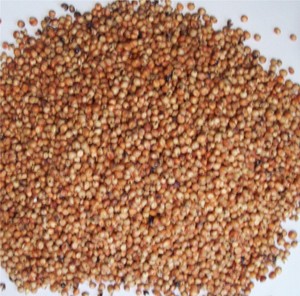

The times presented are for comparative purposes only. Time required to reach each stage depends both on the hybrid and the environment in which it is growing. Stages shown and discussed range from emergence until physiological maturity. If the lowest leaf on the plant is pointed, then at least one leaf has been lost. The first leaf produced by the sorghum plant has a rounded tip. Identification of individual leaves early in the growing season may also be aided by considering the shape of the first (lowest) leaf. The young plant shown has three fully developed leaves. Several lower leaves have been lost.Ī leaf is counted when the collar (the point where the leaf blade and leaf sheath, attach) is visible without tearing the plant apart. The older plant in Figure 1 has parts identified that occur later in the season. Some of the early stages of development are defined by the number of fully developed leaves. Figure 1 shows a young sorghum plant and an older plant. Some definitions of plant parts are necessary to identify various stages of plant development described in this publication. The specific timing between growth stages and number of leaves developed at later growth stages may vary among hybrids, seasons, or locations. Hybrids grown at other locations would follow the same general growth pattern. Growth and development of the grain sorghum plant are described only in general terms in this publication.

Once the basic growth pattern of grain sorghum plants is understood, it is much easier to anticipate problems and judge the merit of changing a management practice. The producers that generally have the highest yields are those that understand how the plant grows and develops.

Most producers select from hybrids available and choose those that have shown to be adapted to our environment and provide consistently high yields. The hybrids available vary in plant height, drought resistance, maturity, insect resistance, openness of head and color of grain just to mention a few differences. In general, most of the grain sorghum planted in our area is a hybrid. The choices made by producers can and will impact the crops development. Information will center on the plant and its production needs. Management practices that should be considered and implemented at each plant growth stage is discussed. The information provided below describes the general growth and nutrient accumulation pattern of the sorghum plant and divides the growth of the plant into several identifiable stages. The “Grain Sorghum Production Handbook” from Kansas State University (C687) gives a good overview of most of the production considerations. Management practices used by producers prior to planting until the crop is harvested can affect its growth, development, and nutrient uptake.

To manage the sorghum crop for maximum production, the producer must understand how the plant grows and develops. In our area the grain is primarily used as a livestock feed, however, in some regions of the world it serves as a human food. Sorghum is an importance crop grown in West Central Texas.


 0 kommentar(er)
0 kommentar(er)
